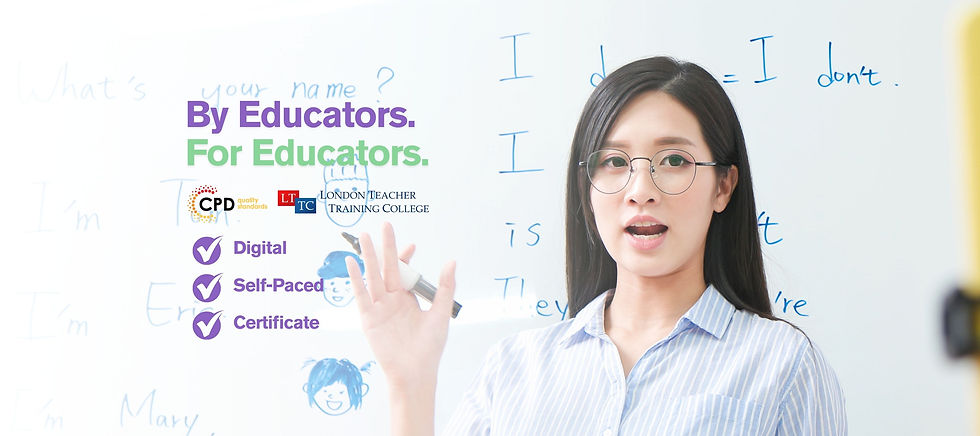5 Benefits of Reciprocal Teaching that will Transform Your Classroom
- Henry Maximus C

- Jun 26
- 4 min read
Imagine a classroom buzzing with curiosity, where students lead lively discussions, dive deep into texts, and grow more confident with every lesson.
That’s the magic of Reciprocal Teaching, a proven, dynamic strategy that empowers students to take the reins of their learning. By fostering collaboration and critical thinking, this approach doesn’t just teach—it inspires. Let's start!
Reciprocal Teaching in a Nutshell
Reciprocal teaching is an interactive instructional approach where students actively engage with texts by taking on roles like predictor, questioner, clarifier, and summarizer. Guided by their teacher, students work in small groups to discuss and dissect content, fostering a deeper understanding through collaboration and dialogue. This student-led method transforms passive reading into an exciting, thought-provoking process, as demonstrated by foundational research (Palincsar & Brown, 1984).

Benefit 1: Supercharged Comprehension Skills
Reciprocal teaching transforms students into active readers by assigning roles like predictor, questioner, clarifier, and summarizer. These roles spark curiosity and deepen understanding. For example, a student acting as a questioner might ask, “What’s the main idea here?” or “How does this connect to last week’s lesson?” These prompts ignite thoughtful discussions that go beyond surface-level reading.
The result? Students don’t just read—they analyze, connect, and interpret. Research by Palincsar and Brown (1984) shows that reciprocal teaching leads to significant improvements in comprehension, with students demonstrating substantial gains in understanding complex texts. Meta-analyses, such as Hattie’s Visible Learning (2009), further confirm its effectiveness, highlighting its high impact on student achievement (Hattie, 2009).
Benefit 2: A Classroom Alive with Engagement
Nothing lights up a classroom like students who want to be there. Reciprocal teaching makes this happen by putting students at the heart of the learning process. When they take on active roles, their enthusiasm soars, and the classroom transforms into a vibrant hub of ideas.
Picture this: students eagerly sharing predictions or debating a text’s meaning with their peers. This collaborative energy fosters a sense of ownership over learning, making students more invested in their education. While specific data on attendance improvements is limited, the increased engagement and motivation from reciprocal teaching are well-documented benefits that keep students excited to participate (Oczkus, 2003).
Benefit 3: Sharper Critical Thinking Skills
Reciprocal teaching isn’t just about reading—it’s about thinking deeply. Students learn to question assumptions, evaluate sources, and form their own conclusions. For instance, they might discuss why an author makes a certain argument or explore alternative perspectives, sharpening their analytical skills.
These discussions prepare students to tackle complex problems, both in academics and beyond. Studies, such as one by Indriastuti, Sugini, and Anwar (2020), demonstrate that reciprocal teaching significantly enhances critical thinking skills, even in diverse student populations like those with visual impairments (Indriastuti et al., 2020). This skill set equips students for lifelong learning and problem-solving.

Benefit 4: Stronger Social Skills Through Collaboration
Learning is better together, and reciprocal teaching builds a sense of community in the classroom. By working in groups, students practice active listening, respect for diverse opinions, and clear communication. Whether they’re clarifying a tricky passage or summarizing a chapter, they’re also learning to negotiate and collaborate.
This teamwork creates a more harmonious classroom environment and prepares students for future academic and professional settings. The collaborative nature of reciprocal teaching naturally fosters social skills, as students engage in meaningful dialogue and learn from one another, a benefit highlighted in educational research (Mafarja et al., 2023).
Benefit 5: Personalized Learning That Lifts Every Student
Every student learns differently, and reciprocal teaching helps teachers meet those unique needs. By observing group discussions, educators can spot who’s struggling and offer tailored support. For example, if a student often seeks clarification, a teacher might provide extra resources or one-on-one guidance.
This flexible approach creates a nurturing environment where students thrive. Reciprocal teaching promotes a sense of confidence and empowerment, as students take ownership of their learning and see tangible progress in their abilities, making it a powerful tool for inclusive education (Hattie, 2009).
Why Reciprocal Teaching Is a Game-Changer
Reciprocal teaching isn’t just a strategy—it’s a spark that ignites curiosity, confidence, and connection in the classroom. From boosting comprehension and critical thinking to fostering collaboration and personalized growth, it equips students with skills for school and beyond.
By embracing this approach, you’re not just teaching—you’re inspiring students to become thoughtful, engaged learners ready to conquer any challenge. Ready to unlock your classroom’s potential? Dive into reciprocal teaching and watch your students shine!
Want to learn more about IPPAcademy's Certificate Courses for educators? Click HERE to learn more!
Sources:
Hattie (2009): A meta-analysis of over 800 studies found reciprocal teaching has an effect size of 0.74, indicating a strong positive impact on student achievement .
Indriastuti et al. (2020): This study showed significant critical thinking improvements in blind students using reciprocal teaching, supporting its broader applicability .
Mafarja et al. (2023): A systematic review confirms that reciprocal teaching enhances collaboration, communication, and academic achievement
Oczkus (2003): Highlights the engagement and motivation benefits of reciprocal teaching, making it a practical resource for educators
Palincsar and Brown (1984): Their foundational study demonstrated that reciprocal teaching significantly improves reading comprehension, with students showing substantial gains after 15–20 days of intervention



![[一文看清] Phonics vs Phonetics:哪個更適合你的學生?](https://static.wixstatic.com/media/11062b_5832eed02a9a43f6a75eba854c34432a~mv2.jpg/v1/fill/w_980,h_653,al_c,q_85,usm_0.66_1.00_0.01,enc_avif,quality_auto/11062b_5832eed02a9a43f6a75eba854c34432a~mv2.jpg)
Comments